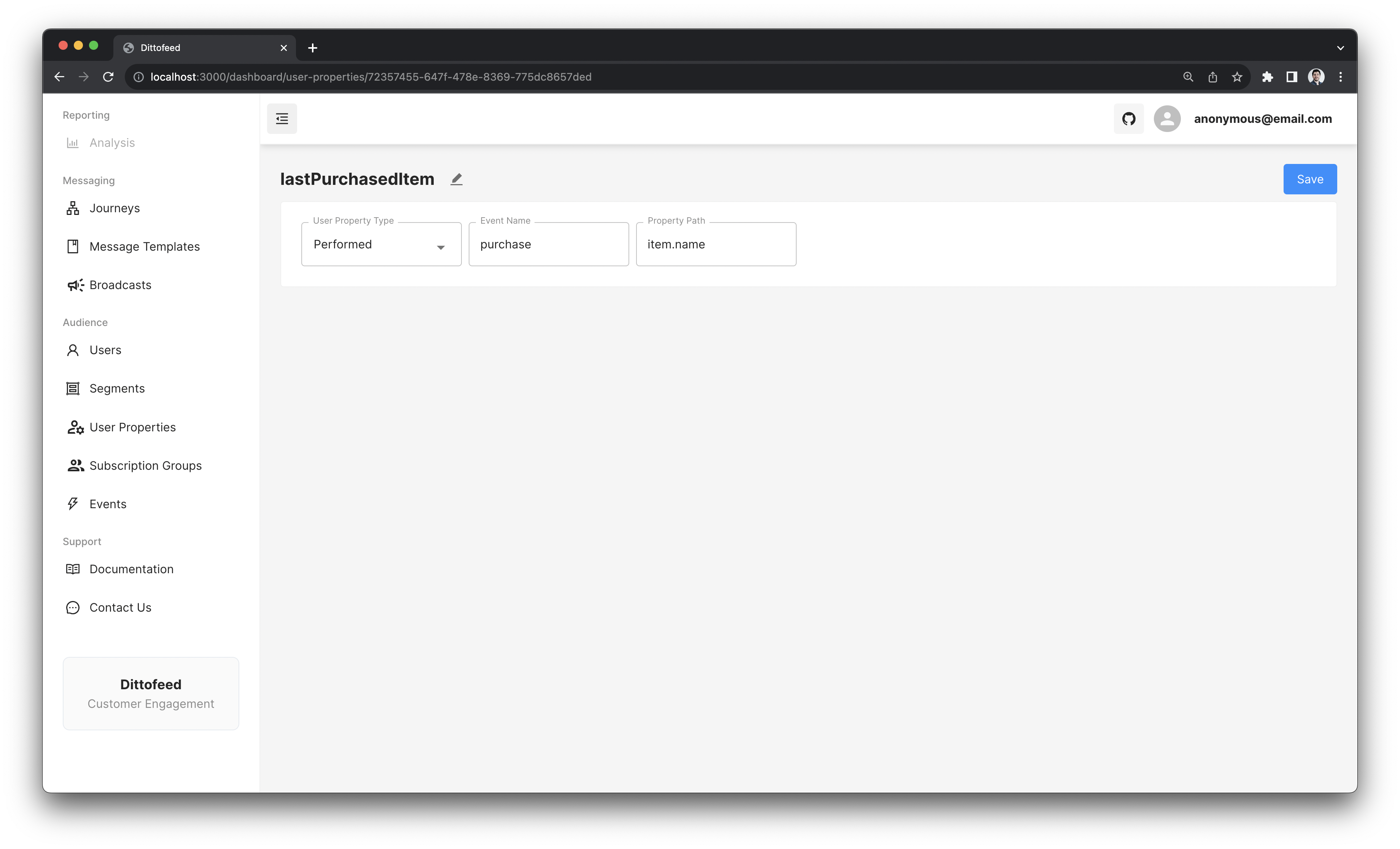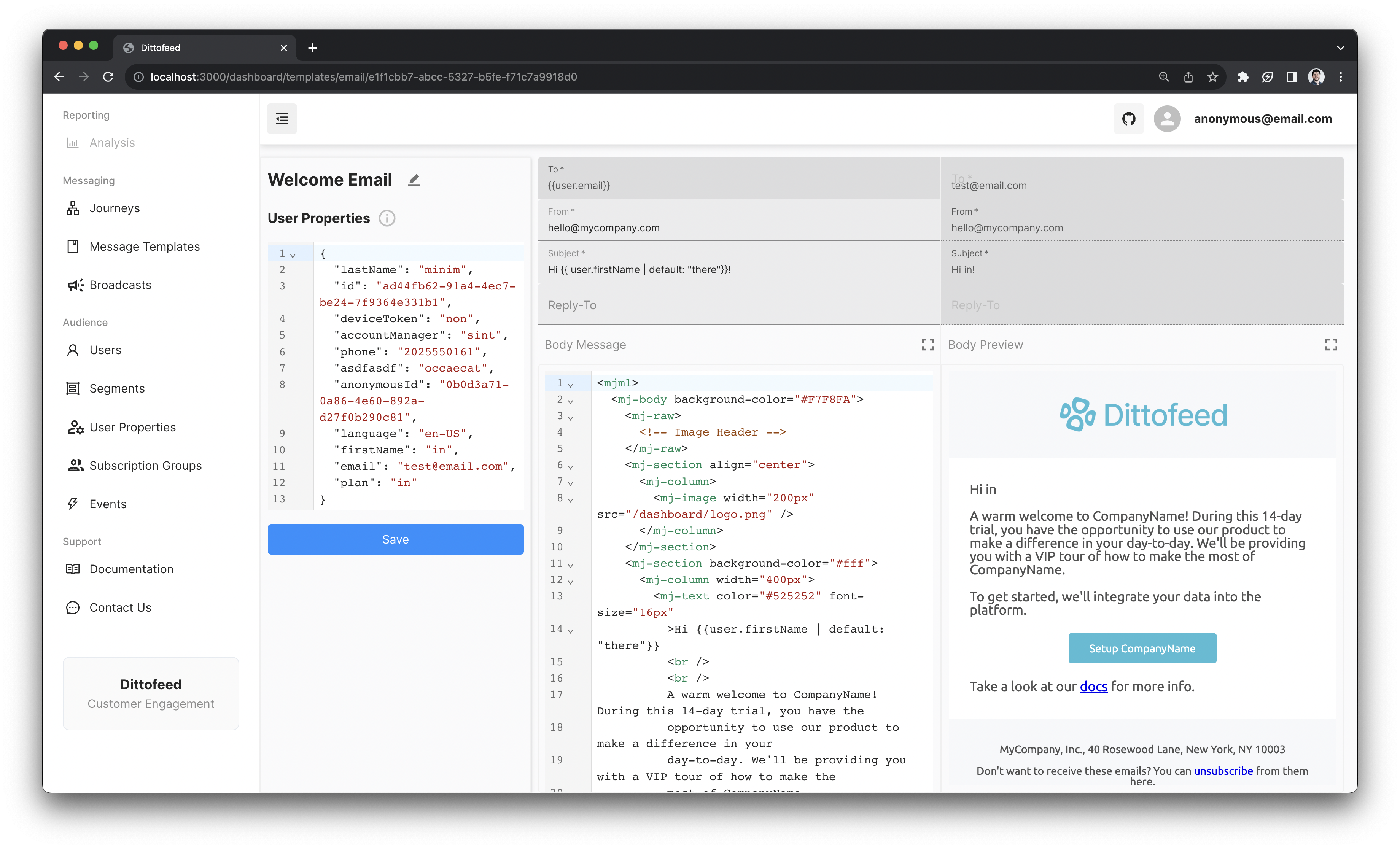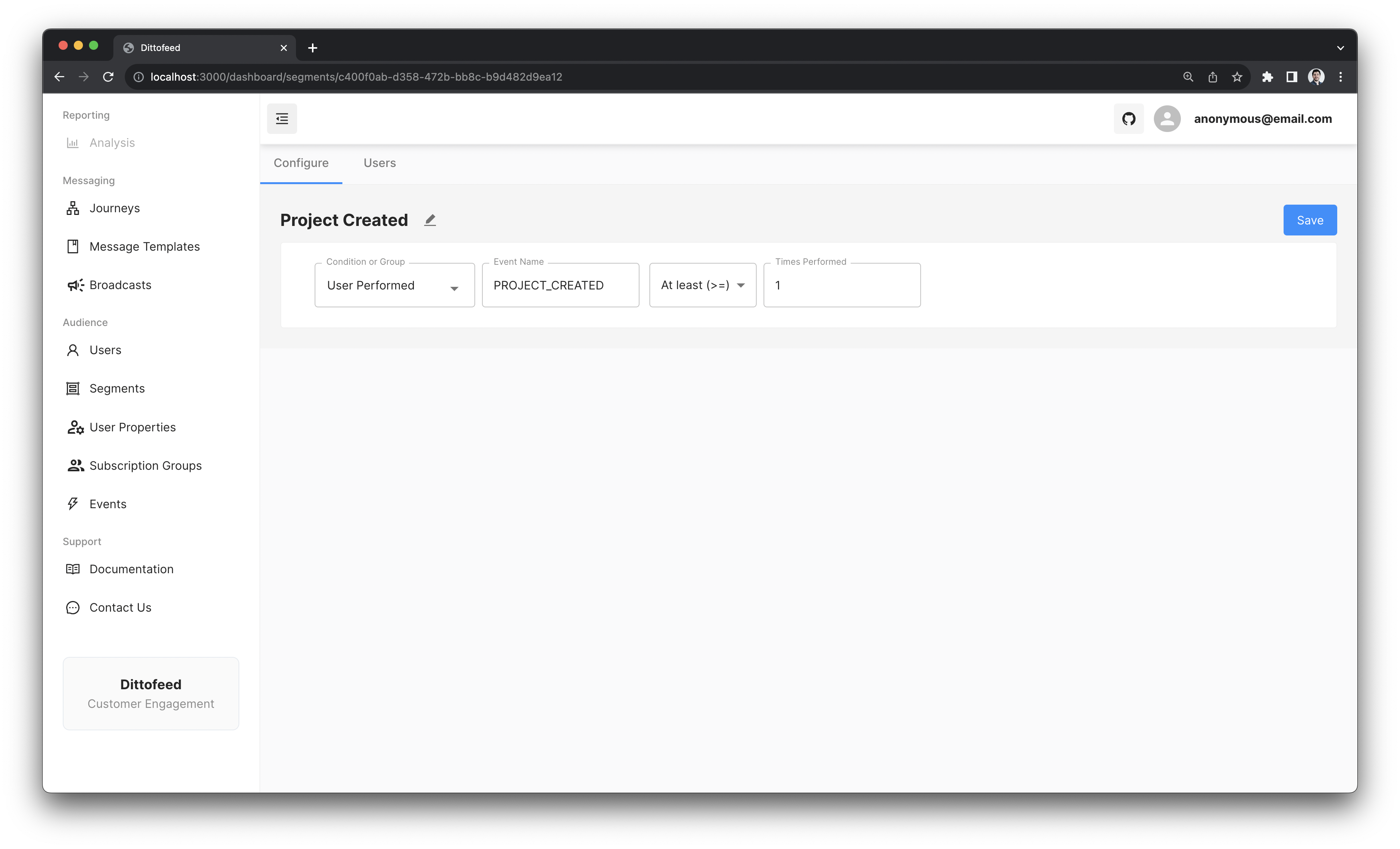Release v0.2.0
by Max Gurewitz
Dittofeed 0.2.0
Welcome to the second release post for Dittofeed. We are thrilled to share some of the important new features and improvements that we have made.
Release Details
New: Define custom user properties
User properties are a powerful feature in Dittofeed that allow you to define how user events are processed and aggregated to be rendered in your templates. In this release, we're extending this functionality. Now, you can select the latest property value from Track events as a user property to be rendered in the template. Previously, you could only select the latest trait values from Identify events. For more information, see our user properties docs.

Improved: User CSV uploads
We have improved form validation for user CSV uploads. The system now informs you when channel identifying fields such as email or ID are missing.

New: Reply-To headers in emails
We have added a feature that allows you to include 'Reply-To' headers in emails. This allows you to conveniently respond to user responses to your emails, even when they're sent from a different domain. This feature is particularly useful for minimizing risk. You can send emails from a separate subdomain, and if the deliverability of that domain becomes compromised, the consequences are lower.

Improved: Default operator for 'Performed' segments
This release includes a quality of life improvement for 'Performed' segments. When creating performed segments, the default operator is now 'at least 1 times', rather than 'exactly 1 times'. This is a setting that most users require more often. For more information, see our docs.

Improved: Legibility of large journeys
We have improved the layout of nodes in large journeys to make them easier to read. This improvement is accompanied by bug fixes that affect the deserialization of large journeys from the server.
Improved: Unsubscribe links
We have made a couple of important improvements to unsubscribe links. Now, you can customize the text in unsubscribe links, and these links will open in a new tab. For more information, see our [docs](link-to-docs).
<!-- Defaults to the text "unsubscribe". -->
Click here to {% unsubscribe_link %}.Can now be used as follows,
<!-- "To unsubscribe click here." -->
To unsubscribe click {% unsubscribe_link here %}.